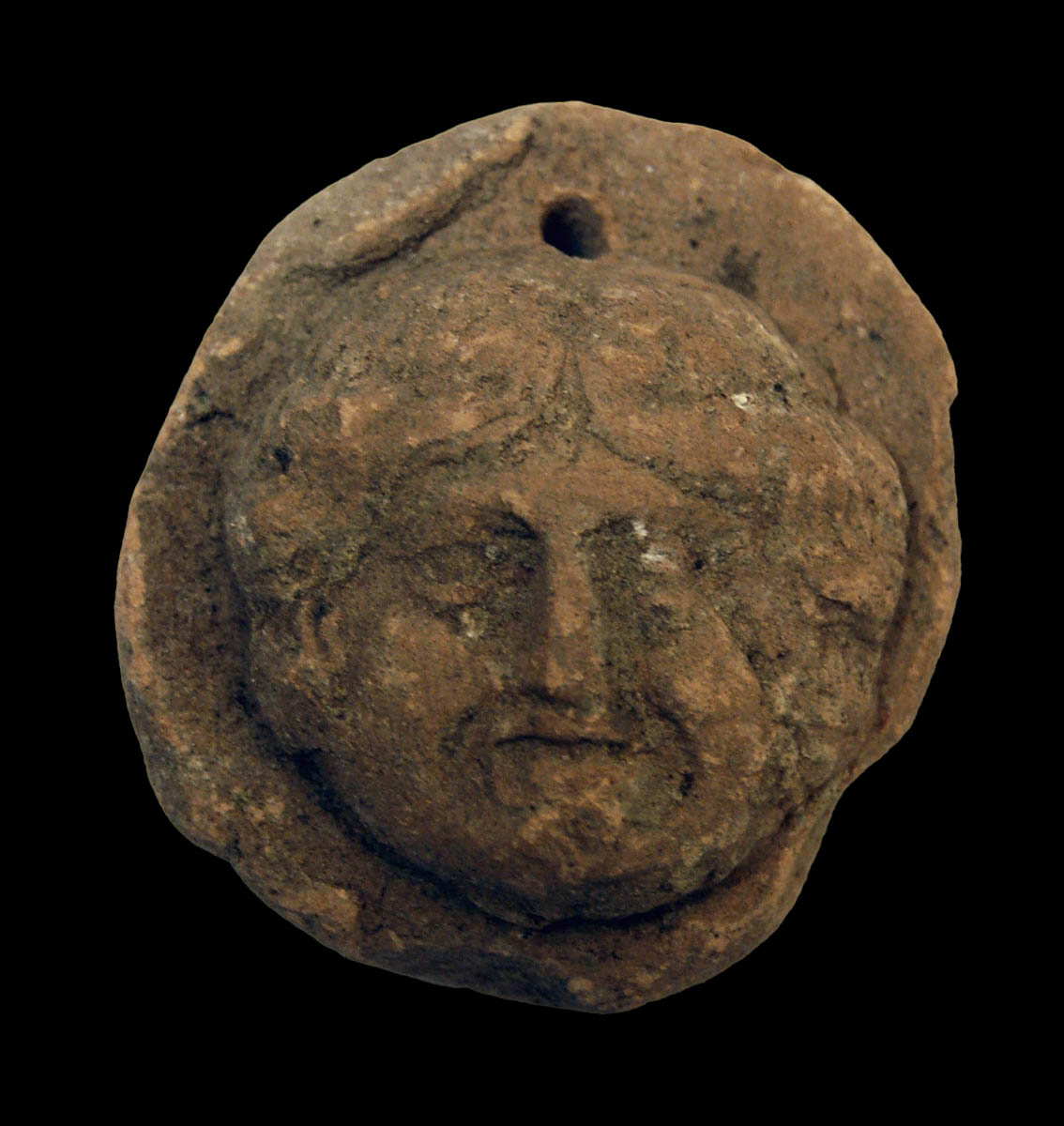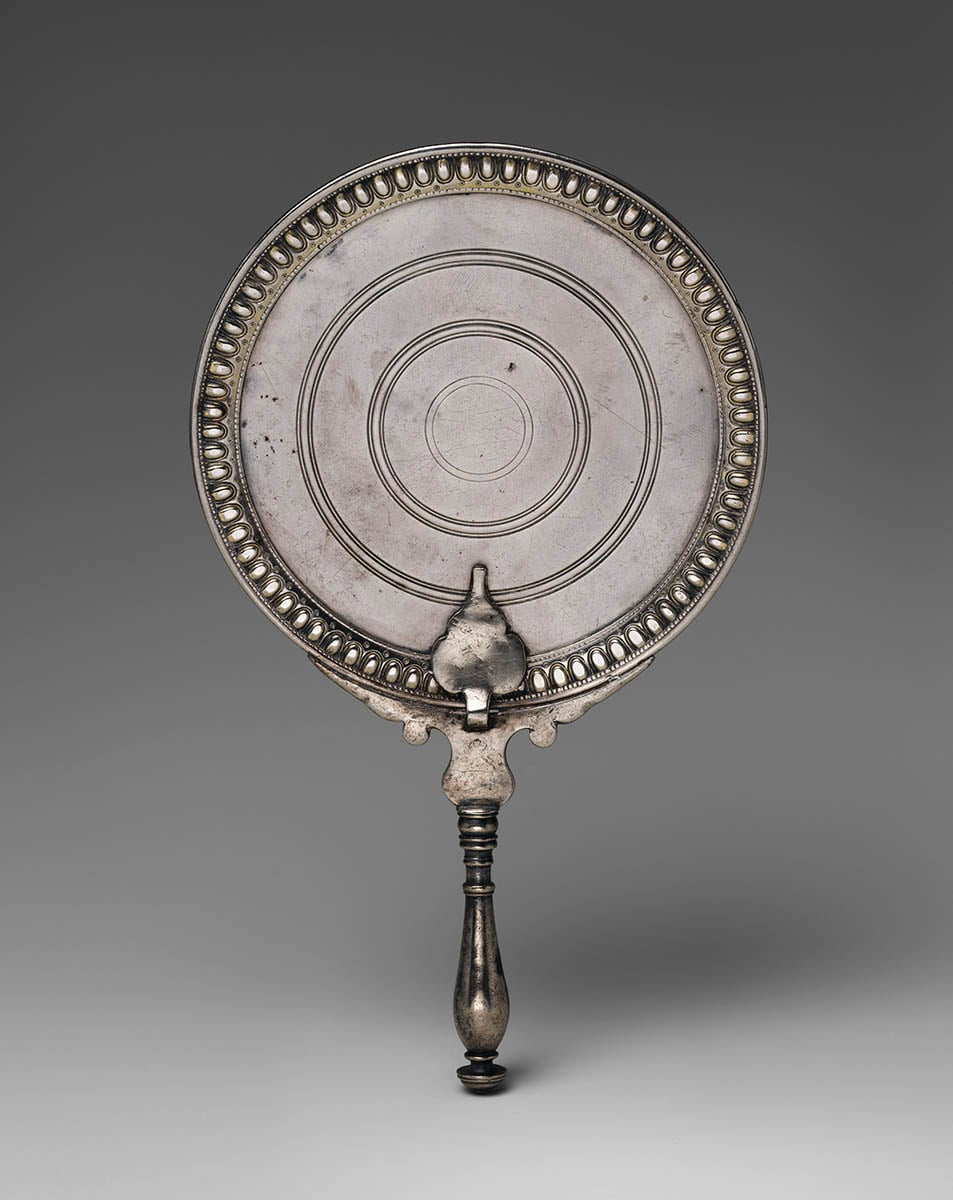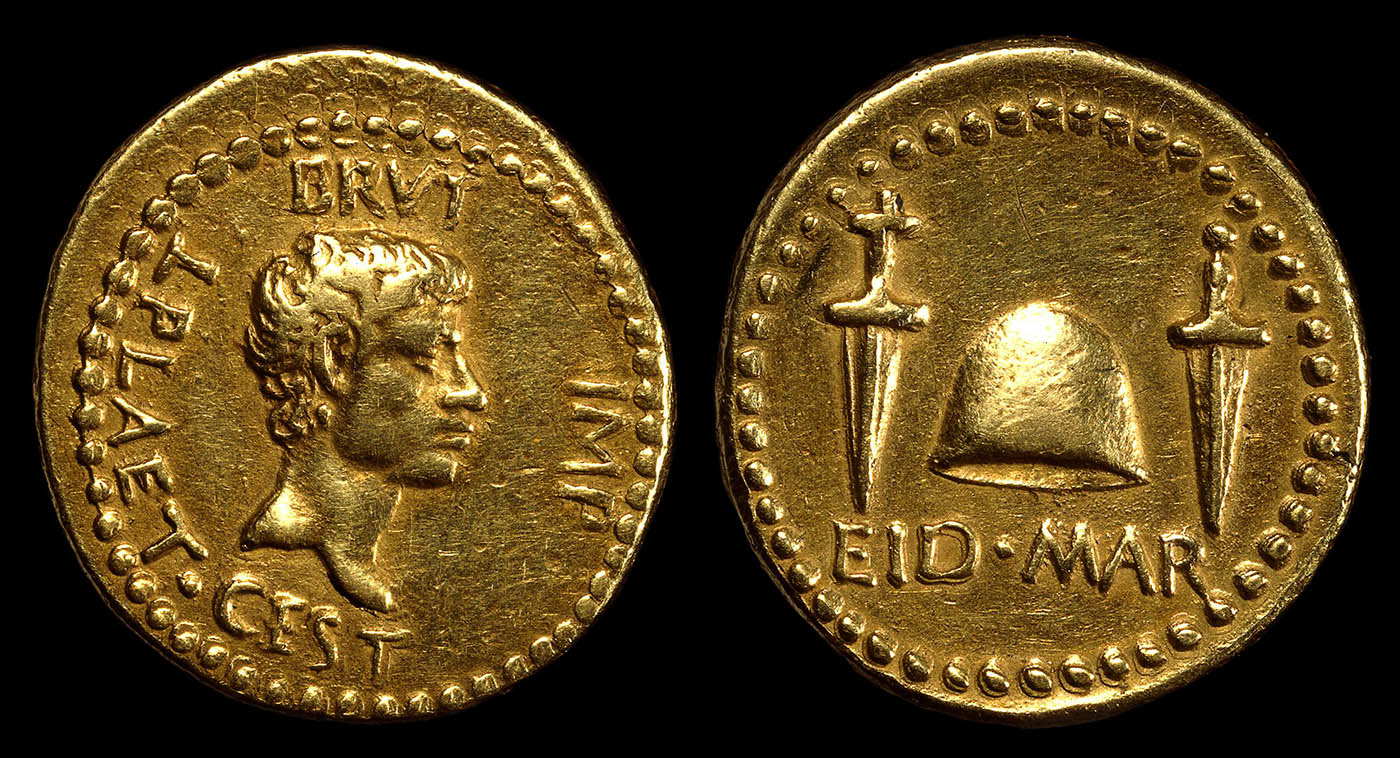Ancient Rome Fashion Men and Women

Fashion in ancient Rome was non anything similar the fast-paced manufacture of today. Styles of ancient Roman clothing and jewelry changed slowly across the centuries. But this did not hateful that fashion and personal adornment were not important to the Romans; far from it. In a society obsessed with condition, habiliment and jewelry played a fundamental part in outwardly indicating one'due south position in the world.
Expensive fabrics and precious jewels were clearly indicators of wealth. Simply overt ostentation was frowned upon, suggesting newly caused wealth and a lack of nobility. Particular elements of mode could also open a person up to criticism with regard to their character. For men in particular, their appearance could exist interpreted as a sign of effeminacy or fifty-fifty immorality – the greatest of Roman insults.
'Yous are familiar with the carefully coiffed immature men, with their gleaming beards and pilus – everything from a box; y'all can never hope for anything stiff or solid from them.'
(Seneca the Younger)
How Was Ancient Roman Clothing Made?

The most mutual fabrics institute in ancient Roman habiliment were wool, linen, and silk. Leather was only used for shoes and sandals, with the exception of military uniforms. Wool was produced in Italy, merely linen and silk frequently came from the eastern parts of the empire. Greece provided an fantabulous climate for the flax establish and some of the all-time silk came from the island of Kos. It is also probable that past the 1st century CE, some linen and silk were imported from Syria and China, respectively.
Nearly fabric was not dyed equally this was an expensive procedure. The most luxurious color of dye was purple, which came from crushed sea snails and was known as Tyrian purple. Past the Imperial era, majestic was closely associated with the emperor. Roman sumptuary laws stated that simply the emperor could wear a toga of solid purple.
Are you enjoying this article?
Sign up to our Free Weekly Newsletter
Delight check your inbox to activate your subscription
Thanks!

Clothes were cut and sewn from large pieces of woven cloth that had been produced using a loom. In ancient Rome, women were traditionally weavers of cloth. It was considered role of the office of Roman women to participate in making wearing apparel for their household. Even aristocratic women were expected to oversee this piece of work.
Once woolen fabric had been woven information technology was then taken to the fuller. His function was to clean and shrink the wool to make it suitable for making into clothes.
Fullers' workshops discovered in Pompeii and Ostia provide many details well-nigh this process. The wool was seemingly cleaned by being trodden underfoot in a mixture of h2o and urine. It was so stale, trimmed and pressed in large screw-presses. Most cloth retained its natural color. Still, white garments could be produced by bleaching the fabric in sulfur.
The Toga

There were few differences between aboriginal Greek and Roman clothing styles. Indeed, much ancient Roman clothing was inspired past before Greek counterparts. For example, the Greek himation, pictured above, was worn by citizens in Greece to point their freeborn status. This garment and its indication of social standing was as well adopted by the Romans. The Etruscans are believed to accept introduced the himation to ancient Rome after early contact with Greek culture. The himation gradually developed into the more voluminous Roman toga.

The toga was essentially a piece of draped cloth with a semi-round shape. By the 1st century CE it is thought to have measured as large as 5.5 ten 2.75 meters. The toga had no fastening and the bulk of the fabric was held in the crook of the arm. In reality, it must have been cumbersome to clothing. This perhaps explains why it was just desirable for certain occasions.

Togas were worn in different colors and with different embellishments according to status and occasion. The toga pulla was a dark wool garment worn for mourning. The toga candida was worn past candidates for public elections and was distinguished by its bright white color. An undyed toga with a narrow imperial stripe (clavus angustus) at the border was worn by equestrians and sons of the elite. Togas with a wide purple stripe (clavus latus) were reserved for senators and other holders of loftier office. As we have seen, only emperors could wear a toga entirely of purple. But victorious commanders returning from war could wear togas of regal wool and gold thread (toga picta).
The apply of togas spread gradually throughout the western provinces of the empire, but was less mutual in the East. Togas also became increasingly big and expensive. This meant they were somewhen the sole preserve of the very wealthy.
Everyday Clothing in Aboriginal Rome

Almost normal Romans probably did not own a formal toga. It was not a applied garment and did not fit into the demands of daily life for most people. Instead, everyday ancient Roman clothing would have consisted of tunics, cloaks, and mantles (informal draped cloth).
Nigh Romans would accept endemic at least one woolen cloak. Roman cloaks were worn pinned at one shoulder (chlamys) or joined at the front with a hood (birrus). Women likewise wore a type of cloak known as the palla. This was a draped garment that could be pulled over the head when required.
Tunics were a staple item of ancient Roman clothing for men and women. These were mostly fabricated of wool or linen for the warmer months. They could be worn alone or nether more than formal garments, such as the toga. Normally a tunic was sleeveless and worn with a belt for definition.

Women wore the stolla, which was a type of long dress secured with a girdle. Decoration was often found at the neckline of the stolla, with motifs or bands of color woven into the cloth. Embroidery was rare since it was an expensive and time-consuming handcraft.
The Romans did non wear trousers, except as part of the military uniform. In ancient Greece, trousers had long been associated with foreign enemies such equally the Persians, who wore striped tapered trousers. The Romans besides viewed trousers as the clothes of the enemy. The then-called barbarian tribes of Europe, the scourge of the Roman Empire, likewise favored the trouser over tunics and draped cloth.
Niggling is known about Roman underwear. Undergarments were likely fabricated of linen and probably took the form of a lightweight tunic. Women were known to bind their breasts with cloth bands and men wore loincloths.
Women and Beauty in Aboriginal Rome

Women in ancient Rome used hairstyles, make-up, and jewelry to add interest and variation to their attire. While ancient Roman clothing styles changed slowly, the fashion for hairstyles inverse chop-chop and is frequently a useful indicator for dating Roman art and sculpture.
Elaborate hairstyles were very popular in the tardily 1st and early on second centuries CE. Pilus could be arranged around a wire framework to create superlative for eye-catching styles. Hair pieces of plaits and curls, often fabricated from the hair of captured slaves, were likewise clipped into a woman's existing hair. By the mid-second century Advertizing, styles became more simplified. Waves crimped into the hair also became popular at this fourth dimension, as in the portrait bust to a higher place.
Hairstyling for wealthy women was done in the dwelling by a specialist female slave, the ornatrix. Just evidence from Pompeii does suggest that hairdressing shops for men and women also existed, known as tonsores.

Archaeological finds prove that pilus and beauty tools in aboriginal Rome were quite similar to those we use today. These include combs, tweezers, razors, toothpicks, and smash cleaners. Pilus-curling tongs have also been discovered. These consisted of two cylinders, one hollow and one solid, which could be heated in the fire.
Cosmetics and perfume were also widely used, including by some men. Glass containers take been establish with traces of their original contents such as blusher and face up powder.
Interestingly, one of our best ancient sources for Roman women'due south beauty regimes is the love poet Ovid, who wrote Cosmetics for Women. This was a parody of more formal didactic poetry and sought to provide details of how women could make themselves beautiful for men. The following is his recommendation for an effective cream for blemishes:
'Spots on the face are banished by a remedy taken from the querulous nest of birds: kingfisher-cream they call it.'
(Ovid, Medicamina Faciei Feminae, line 75)
Jewelry in Ancient Rome

Jewelry was used to embellish formal and breezy aboriginal Roman clothing. The Etruscans, a dominant group in Italy from the 8th—5th centuries BCE, created cute jewelry using sophisticated techniques such as granulation and filigree. These early designs inspired afterwards Roman styles. Notwithstanding, the techniques gradually became simpler with the utilise of embossing and beadwork.
Jewelry made from precious metals, such as aureate and silverish, only really became popular in ancient Rome in the 1st century CE. By this time, the empire had grown exponentially over the last century. Many new provinces had been acquired, such every bit Asia Minor, Greece, and Syrian arab republic, which opened upward access to precious metals and luxury objects.

The employ of precious stones in jewelry also became more fashionable during this flow. Precious stones were believed to have protective qualities. For example, amethysts were thought to relieve the effects of overindulgence in food and wine. Intaglio stones were also pop. These were created using a specialist technique of carving images into gemstones. Some women belonging to the elite sections of society amassed impressive gemstone collections. Pliny the Elderberry gives the following description of Lollia Paulina, the married woman of Emperor Caligula:
'She was covered in emeralds and pearls…glittering with jewels on her caput, in her pilus, on her neck, ears, and fingers.'
(Pliny the Elder, Natural History, 9.117)

Aside from the expected necklaces, bracelets, rings and earrings, Roman women wore some more than unusual items. These included hairnets woven from gold wire, diadems – a type of tiara, and hairpins in a wide range of designs.
Some jewelry likewise held very specific connotations and indications of social status. For example, a member of the equestrian class could be identified past the anulus aureus, a solid golden ring worn on their left hand.
Why Was Ancient Roman Wearable Important?

Personal advent clearly played an important part in the Roman earth. If we need concrete evidence of this, then we need look no farther than the sheer number of mirrors that have been discovered at sites beyond the Roman Empire.
But ancient Roman wear and personal adornments were not just products of vanity. A piece of vesture or jewelry could quite literally act as a symbol of status. As we have seen, the various versions of the toga were used to indicate the social or even political positions of the elite.

Aboriginal Roman wearable was also of import for those lower down in social club. Freedmen and women were presented with a conical felt hat later on gaining their liberty, known equally the pileus. This hat would have represented a struggle out of slavery and must accept held swell personal importance for individuals throughout the Roman world.
Fashion and personal beautification were therefore rich in possibilities for the people of aboriginal Rome. They offered opportunities for self-expression and displays of social status while besides serving every bit an important symbol of personal challenge and accomplishment.
0 Response to "Ancient Rome Fashion Men and Women"
Post a Comment